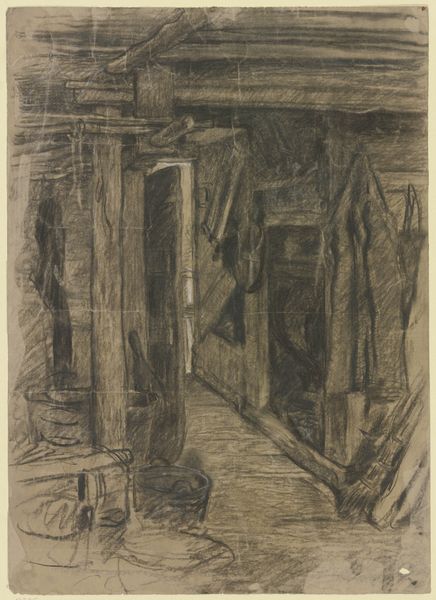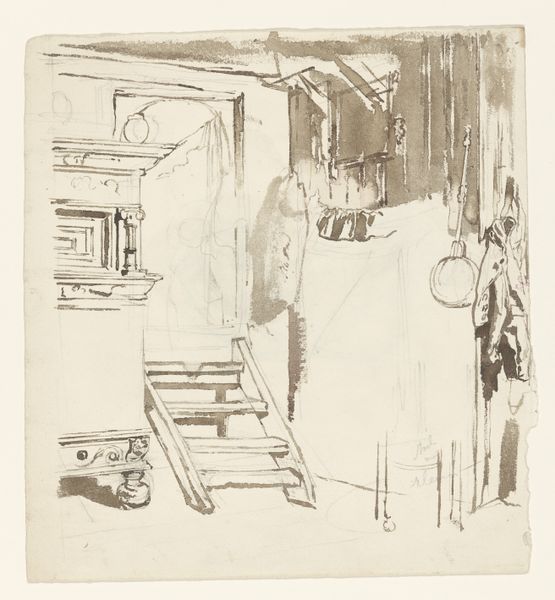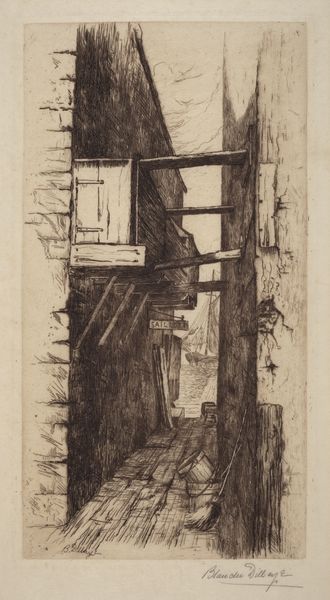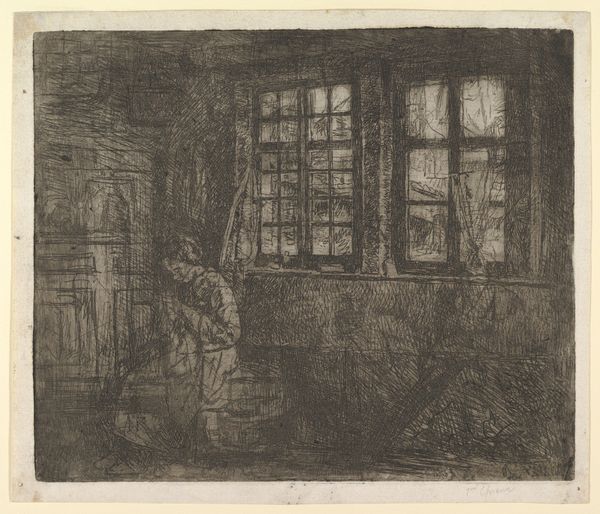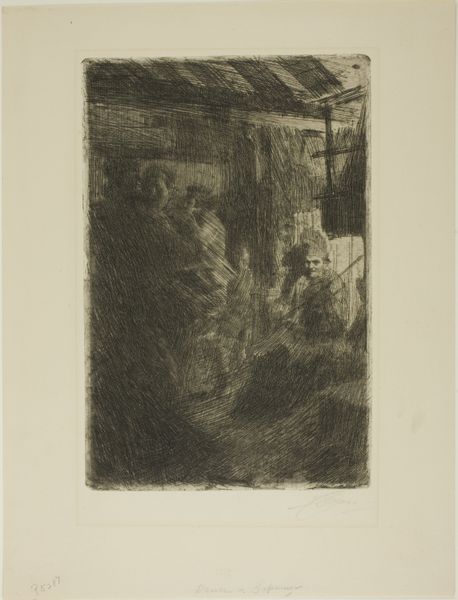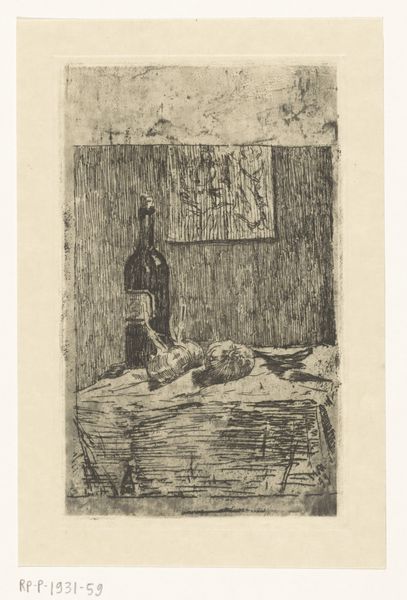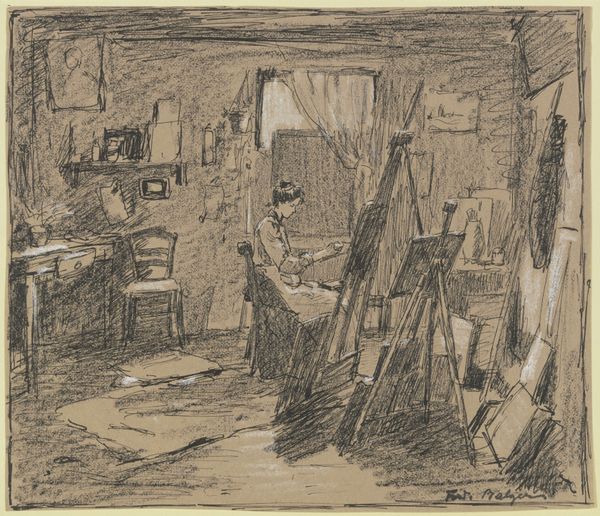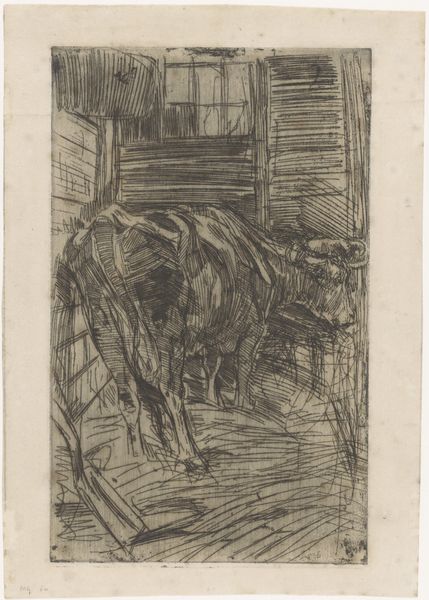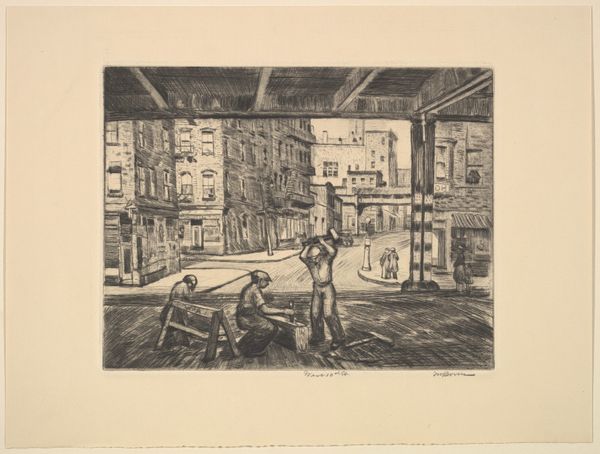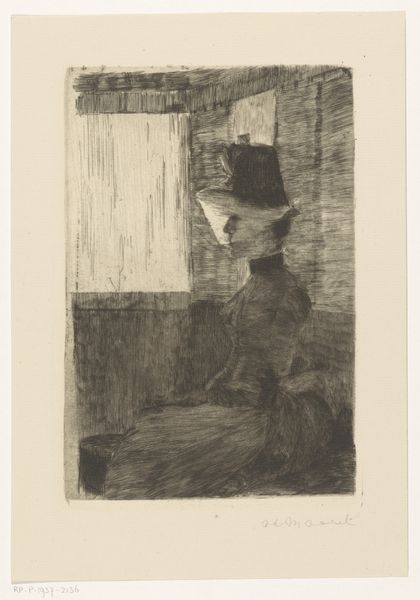
drawing, paper, ink
#
pencil drawn
#
drawing
#
aged paper
#
toned paper
#
light pencil work
#
pencil sketch
#
paper
#
personal sketchbook
#
ink
#
pen-ink sketch
#
expressionism
#
sketchbook drawing
#
pencil work
#
sketchbook art
Dimensions: height 302 mm, width 225 mm
Copyright: Rijks Museum: Open Domain
Editor: This is Hendrik Chabot’s “Atelier van de kunstenaar in zijn moeders huis,” or “The Artist’s Studio in His Mother’s House,” made in 1920 using ink and pencil on paper. There’s a real sense of intimacy in this scene; it's not a grand, formal studio, but a humble, personal space. How do you read this depiction of a workspace? Curator: This image gives us a peek into the socio-economic realities of many artists during this period. It humanizes the creative process by situating it within a domestic, almost cramped, environment. Does this location, this artist's studio being set up inside his mother's house, challenge your preconceived notions about what an artist's workspace *should* look like, or the class and privilege implied? Editor: It does, definitely. The term “artist studio” often conjures images of these huge, airy spaces. But this feels more real somehow. Curator: Exactly. Chabot's choice to represent his workspace this way could be interpreted as a statement about the artist's relationship with society, a deliberate unglamorizing of the artistic profession, especially considering his later association with socialist ideals. Also, the tools depicted give it context. Notice the bare essentials for an artist are represented. Editor: I see the chair, the window, the music. It suggests not just his physical location, but also a more intimate look at his influences and practice. Curator: And what do you make of the rough quality of the sketch itself? Does the seeming lack of polish affect your perception? The quick lines and shading could be Chabot showing an honest portrayal of art, not as something overly precious, but accessible, and human. Editor: That’s an interesting point. It moves the focus from perfection to the artistic process itself. I had not considered the socio-political element and the raw quality of the work. That adds so many new layers of meaning to something that seemed initially like just an intimate snapshot. Curator: Precisely! Looking at art through the lens of history helps us appreciate its relevance, and reveals hidden narratives behind what may seem a simple portrayal.
Comments
No comments
Be the first to comment and join the conversation on the ultimate creative platform.
